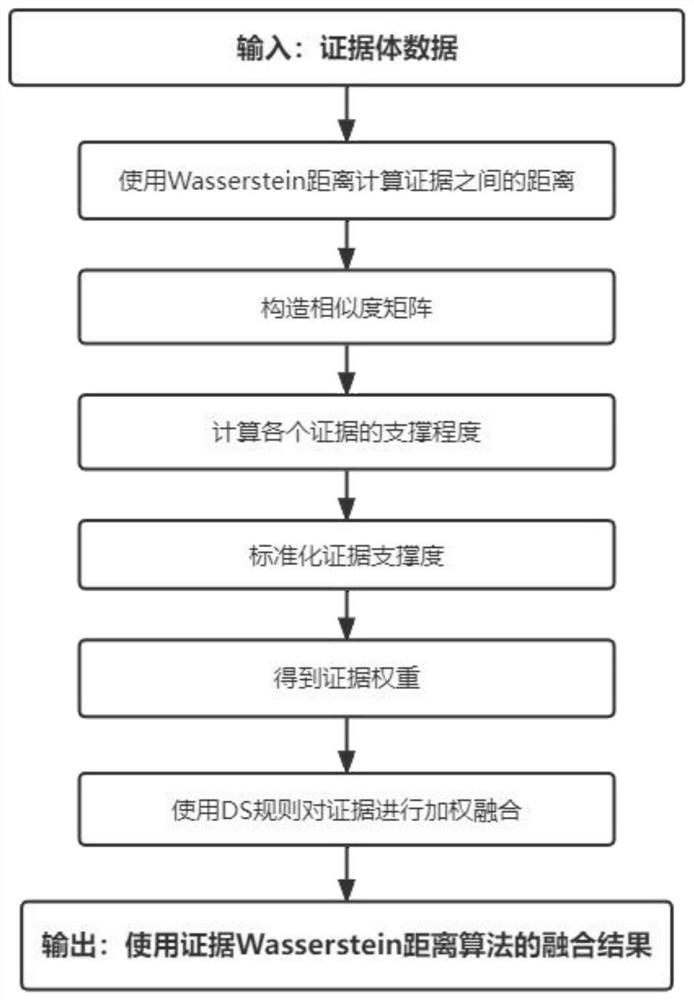Application of evidence Wasserstein distance algorithm in aspect of component identification
A technology of evidence and distance, applied in the application field of evidence Wasserstein distance algorithm in component identification, can solve problems such as conflicting common sense.
- Summary
- Abstract
- Description
- Claims
- Application Information
AI Technical Summary
Problems solved by technology
Method used
Image
Examples
Embodiment
[0036] Taking the wine dataset as an example, there are 3 wine varieties, 13 different attributes, and the resulting 45 BBAs are shown in Table 6. We need to identify the source of the sample by providing it and compare it with other methods to draw conclusions.
[0037] Table 1 BBA generated from wine sample dataset
[0038]
[0039]
[0040]
[0041]Table 2 shows the results of our use of four methods to determine the sample origin. It can be seen from Table 2 that the results caused by the classical D-S evidence theory rules are chaotic, which directly determines that the experimental results are completely b-type. This simple judgment is too absolute and does not consider the impact of high conflict factors on the experimental results. The Yagers method is also not satisfactory. First, it is clear that it focuses too much on mixed results (i.e. m(a,b,c)) to pinpoint the exact origin of the samples. Secondly, the support of the method for the b-type of the vari...
PUM
 Login to View More
Login to View More Abstract
Description
Claims
Application Information
 Login to View More
Login to View More - R&D
- Intellectual Property
- Life Sciences
- Materials
- Tech Scout
- Unparalleled Data Quality
- Higher Quality Content
- 60% Fewer Hallucinations
Browse by: Latest US Patents, China's latest patents, Technical Efficacy Thesaurus, Application Domain, Technology Topic, Popular Technical Reports.
© 2025 PatSnap. All rights reserved.Legal|Privacy policy|Modern Slavery Act Transparency Statement|Sitemap|About US| Contact US: help@patsnap.com



